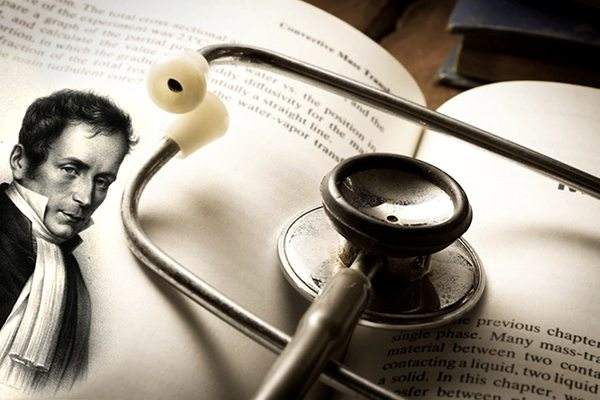In the early 1800s, a French physician named Rene Laennec had a dilemma.
19世紀初,法國內科醫生雷納-雷奈克陷入了兩難。
He needed to listen to the heart sounds of a young woman with signs of heart disease.
一位有心臟病跡象的年輕女病患前來求診,而雷奈克需要聽聽她的心跳。
But the only method of listening to heart sounds known to Western medicine at the time was simply to press an ear to the patient’s chest.
當時,西方醫學唯一的聽診方法就是簡單地將耳朵貼在病患胸部進行聽診。

Laennec just couldn’t bring himself to get that close and personal with this ample young woman.
但雷奈克不想與這位年輕、體態豐腴的女子有親密的肢體接觸。
How could he make a diagnosis?
那么他該如何診斷呢?
The story goes that Laennec grabbed a piece of paper and rolled it into a cylinder.
隨后,雷奈克抓起一張紙并將其卷成圓筒狀。
With the cylinder between his ear and the young woman’s chest, Laennec saved himself and his patient from embarrassment.
他將紙筒放在自己耳朵和患者胸部中間,如此兩人都不會太過尷尬。
But he was also surprised to find that the heart sounds conducted through the cylinder were louder and clearer than he’d ever heard before.
就在此時他驚奇地發現,通過紙筒傳來的心跳聲比之前聽到的更為響亮、清晰。
譯文為可可英語翻譯,未經授權請勿轉載!











